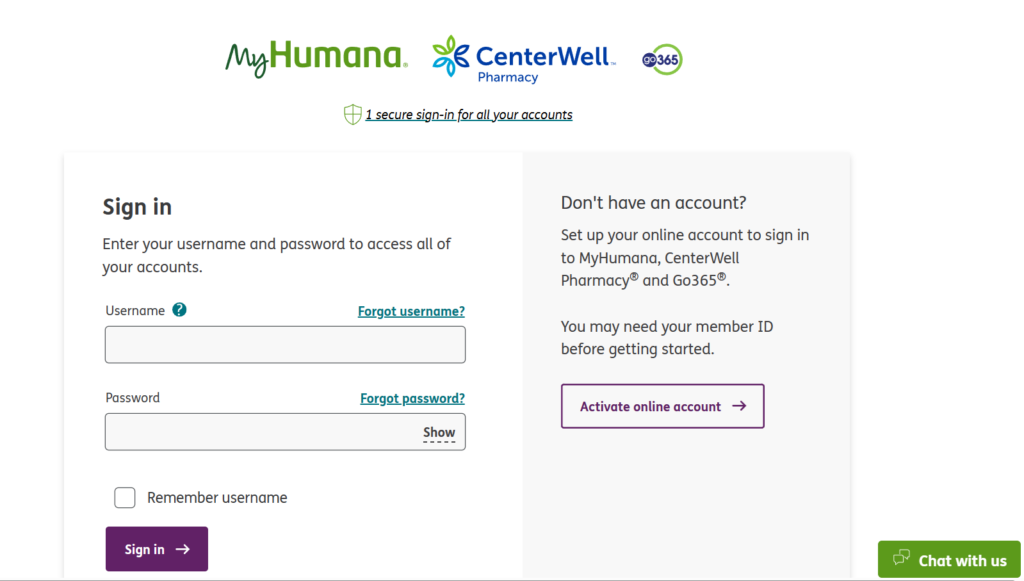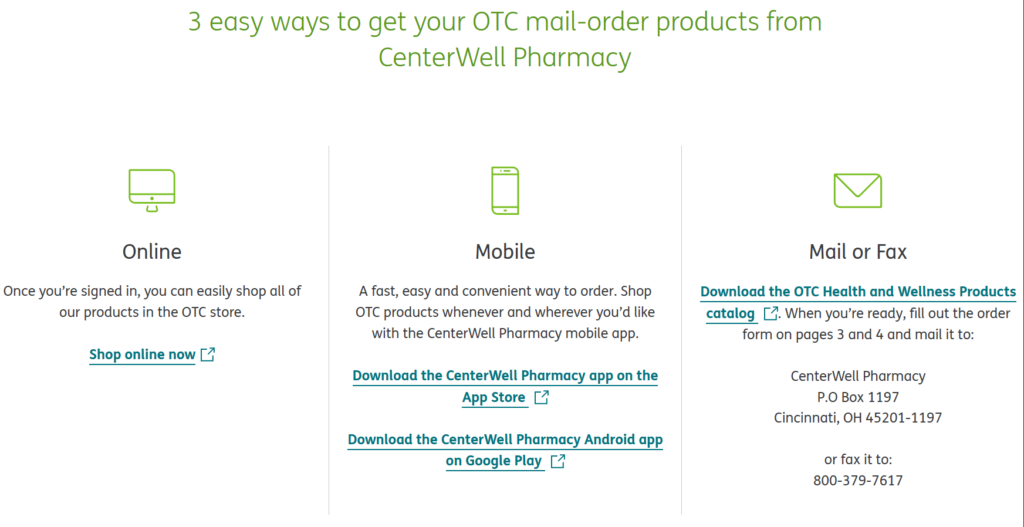Understanding Humana’s over-the-counter (OTC) drug coverage is crucial for informed healthcare decisions. This overview delves into Humana’s policies, comparing them to competitors and exploring cost-sharing implications. We’ll also examine the resources available to members, potential interactions, and the pros and cons of OTC versus prescription medications.
Navigating the world of healthcare insurance can be complex, especially when it comes to understanding specific drug coverage. This resource simplifies the process by providing a clear and comprehensive guide to Humana’s OTC policies.
Humana’s OTC Drug Coverage
Humana’s approach to over-the-counter (OTC) medication coverage varies depending on the specific plan. Understanding these nuances is crucial for beneficiaries to make informed decisions about their healthcare expenses. This section provides a summary of Humana’s OTC policies, outlining coverage specifics and important considerations.
Humana generally offers limited coverage for OTC medications. This coverage is not comprehensive and often subject to specific criteria. Beneficiaries should consult their plan documents or contact Humana directly for the most up-to-date and accurate information regarding their particular plan.
Summary of Humana’s OTC Policies
Humana’s policies regarding OTC medications are designed to provide some coverage for essential, frequently used products while also controlling costs. Coverage decisions are often based on the medication’s necessity, potential cost-effectiveness, and whether a comparable prescription medication is available.
Types of OTC Medications Typically Covered
Humana typically covers a range of OTC medications, often focusing on those used to treat common ailments like pain, allergies, and minor illnesses. Examples include over-the-counter pain relievers (like ibuprofen and acetaminophen), allergy medications, and cold remedies. However, the specific types of OTC medications covered can vary widely between Humana plans.
Criteria for Determining OTC Coverage
Humana utilizes a multi-faceted approach to determining coverage for OTC items. Factors influencing coverage decisions include:
- The medication’s clinical necessity and appropriateness for self-treatment.
- The potential cost-effectiveness of the OTC medication compared to other options.
- The availability of a comparable prescription medication.
- The presence of any exclusions or limitations within the specific plan.
Examples of Covered and Uncovered OTC Medications
Examples of OTC medications that are typically covered by Humana plans include:
- Acetaminophen (Tylenol) for mild pain and fever.
- Ibuprofen (Advil) for pain relief and inflammation.
- Common allergy medications.
- Over-the-counter cold and flu remedies.
Examples of OTC medications that are typically *not* covered by Humana plans include:
- Expensive or specialized medications.
- OTC medications that could potentially be substituted by a prescription.
- Medications for chronic conditions that are generally treated with prescription drugs.
Humana Plan OTC Coverage Table
| Plan Name | Covered OTC Categories | Exclusions |
|---|---|---|
| Humana Choice Plan | Pain relievers, allergy medications, cold remedies | Specialized OTC medications, some nutritional supplements |
| Humana Value Plan | Pain relievers, allergy medications | Many nutritional supplements, some cold remedies |
| Humana Preferred Plan | Pain relievers, allergy medications, cold remedies, and some first aid items | Specialized OTC medications, expensive items |
| Humana Platinum Plan | Pain relievers, allergy medications, cold remedies, and some first aid items | Specialized OTC medications, expensive items, and some nutritional supplements |
Comparing Humana’s OTC Coverage to Competitors
Humana’s approach to over-the-counter (OTC) drug coverage is a significant factor in plan selection. Understanding how Humana’s coverage compares to other major insurers is crucial for consumers. This section explores the varying coverage policies and benefits among different plans.
A thorough comparison reveals significant differences in OTC coverage policies between Humana and competing health insurance providers. These variations often stem from differing philosophies on the management of healthcare costs and the perceived value of OTC medications. The extent of coverage, cost-sharing, and specific categories of covered OTC drugs can differ substantially across plans.
Coverage Policies of Major Competitors
Different insurance companies have distinct approaches to OTC drug coverage. This often results in varying levels of benefits and limitations in different plans. Factors such as the types of OTC medications covered, the associated cost-sharing, and the administration of the coverage program influence the overall value proposition.
Comparison Table of OTC Coverage
The table below presents a comparison of Humana’s OTC drug coverage with that of three major competitors. Note that specific coverage details can vary based on plan type and individual circumstances.
| Provider | Plan Type | Covered OTC Categories | Cost-Sharing |
|---|---|---|---|
| Humana | Silver HMO | Pain relievers (ibuprofen, acetaminophen), cold/flu remedies, allergy medications, and some first-aid items. | Generally, a copay or co-insurance based on the plan’s specific terms. |
| UnitedHealthcare | Bronze PPO | Similar categories to Humana, with possible exclusions for certain medications or higher-cost items. | Copay or co-insurance rates often vary based on the specific medication. |
| Cigna | Platinum HMO | A broader range of OTC medications, potentially including some vitamins and supplements, but with possible restrictions on quantities. | Cost-sharing typically structured as a copay for most items. |
| Aetna | Gold PPO | A wider selection of OTC products, including some specialized items, but may have limitations on the amount covered per year. | Cost-sharing structures often involve co-insurance and deductibles. |
Varying Levels of Benefits and Limitations
The extent of benefits and limitations associated with OTC drug coverage can differ substantially across plans. Some plans might have broader coverage for a wider range of OTC products, while others might restrict coverage to only essential items. Cost-sharing structures, such as copays and co-insurance, can also vary considerably, impacting the overall cost to the consumer. Coverage limitations, such as quantity restrictions or exclusions for specific OTC drugs, should be considered carefully.
OTC Medication Costs and Cost-Sharing
Understanding the cost-sharing arrangements for over-the-counter (OTC) medications under Humana plans is crucial for making informed decisions about your healthcare. This section details the various cost-sharing options and how they differ across Humana plans, providing practical examples to illustrate the impact on overall costs.
Humana plans often incorporate cost-sharing for OTC medications to manage expenses while still ensuring access to these essential products. The specific cost-sharing model depends on the chosen plan, impacting the out-of-pocket expenses for consumers.
Cost-Sharing Types for OTC Medications
Cost-sharing for OTC medications under Humana plans typically involves co-pays, co-insurance, or a combination of both. Co-pays are fixed fees for specific medications, while co-insurance represents a percentage of the medication’s cost. The combination of these options can result in varying out-of-pocket expenses.
Variations in Cost-Sharing Across Humana Plans
The amount of cost-sharing for OTC medications varies significantly depending on the specific Humana plan selected. Plan details and associated documents clearly Artikel the specific cost-sharing structure. Factors like plan tier and coverage level influence the co-pay or co-insurance percentages applied to OTC items. This means that a basic plan might have different co-pay amounts compared to a more comprehensive plan. Understanding the details of your chosen plan is vital for accurate cost estimation.
Impact of Cost-Sharing on Overall OTC Medication Costs
Cost-sharing directly affects the overall cost of OTC medications. For instance, a plan with a higher co-pay for a common pain reliever could lead to substantial out-of-pocket expenses over time. Conversely, a plan with lower cost-sharing could result in significant savings. Individuals should compare different plans carefully to understand how the cost-sharing structure affects the total price. This analysis allows for more informed decision-making when selecting a plan.
Example Cost-Sharing Scenarios
| Medication Name | Cost-Sharing Type | Cost Amount |
|---|---|---|
| Acetaminophen (Tylenol) | Co-pay | $5.00 |
| Antacid (Maalox) | Co-insurance (10%) | $2.50 |
| Cold/Allergy Relief | Co-pay | $10.00 |
| Sunscreen | Co-insurance (5%) | $1.00 |
| Cough Drops | No Cost-Sharing | $0.00 |
Note: These are example scenarios and actual costs may vary depending on the specific Humana plan and the medication.
Humana’s over-the-counter options are pretty straightforward, but if you’re looking for a more comprehensive coverage plan, you might want to consider Vavista car insurance. Vavista car insurance offers a range of policies tailored to various needs, ultimately enhancing your peace of mind on the road. Regardless, Humana’s over-the-counter remedies are a great starting point for many health concerns.
Accessing OTC Drug Information and Resources

Understanding your Humana OTC drug coverage is crucial for making informed decisions about your healthcare expenses. This section details the various ways you can access information about your coverage, including available resources and the steps involved in obtaining this information.
Accessing your OTC drug coverage information is straightforward and offers various convenient methods. Humana strives to provide clear and comprehensive resources to assist members in understanding their coverage and utilizing their benefits effectively.
Methods for Accessing OTC Drug Coverage Information
Humana offers multiple channels for members to access information regarding their OTC drug coverage. This ensures accessibility and convenience for all members.
- Online Portal:
- A dedicated online portal provides a user-friendly interface to access your plan details, including coverage information for OTC medications. The portal typically includes searchable databases, allowing you to quickly look up specific medications and their coverage statuses.
- Member Service Phone Line:
- A dedicated phone line staffed by knowledgeable representatives is available to answer your questions about OTC drug coverage. You can call to obtain information on specific medications, coverage details, and cost-sharing information.
- In-Person Assistance:
- Humana may offer in-person assistance at designated locations. This option allows for personalized consultations and clarification of any uncertainties surrounding your coverage.
Resources for Understanding OTC Drug Coverage
Humana provides a range of resources to help members navigate their OTC drug coverage. These resources aim to provide comprehensive information, ensuring members are well-informed about their benefits.
- Frequently Asked Questions (FAQ) Section:
- An online FAQ section addresses common questions about OTC drug coverage. This section is a valuable resource for quick answers to basic questions and clarifications on common scenarios.
- Member Handbook/Brochure:
- A member handbook or brochure, often available online or through a member service center, provides a comprehensive overview of your plan’s benefits, including specific details on OTC drug coverage.
- Medication Lists/Databases:
- Humana may provide lists or databases of OTC medications covered under the plan. This allows for quick identification of eligible medications.
Steps for Obtaining OTC Drug Coverage Information
Obtaining information about your OTC drug coverage typically involves these steps.
- Determine the method you prefer: Select the method that best suits your needs and circumstances (online portal, phone, or in-person assistance).
- Access the chosen resource: Log in to your online account, contact the phone number, or visit the designated location.
- Provide necessary information: Be prepared to furnish any required information, such as your member ID or the medication’s name, to expedite the process.
- Review the response: Carefully review the provided information regarding your OTC drug coverage.
Available Resources
A summary of resources for accessing information about OTC drug coverage.
| Resource Type | Details |
|---|---|
| Website | Humana’s official website (e.g., humana.com) often hosts a dedicated section with information on OTC drug coverage, including FAQs, brochures, and online portals. |
| Phone Number | A toll-free number or specific number for member services is usually available for inquiries about OTC drug coverage. |
| In-Person Assistance | In some cases, Humana offers in-person assistance at specific locations, such as customer service centers or local offices, for detailed inquiries. |
OTC Medication Interactions and Precautions

Understanding potential interactions between over-the-counter (OTC) medications and other prescriptions is crucial for maintaining health and safety. Many OTC drugs can alter the way prescription medications are processed by the body, potentially leading to unwanted side effects or reduced effectiveness. This section Artikels the importance of checking for interactions and provides guidelines for safe OTC use.
OTC medications, while generally safe when used as directed, can interact with other medications, both prescription and over-the-counter. These interactions can range from mild to severe, highlighting the importance of thorough consideration before combining any OTC product with existing prescriptions. Failing to recognize and address these interactions could result in complications, such as increased side effects or reduced efficacy of the prescribed medication.
Potential Interactions with Prescriptions
A thorough understanding of how OTC medications might impact prescribed treatments is essential for responsible use. It’s important to be proactive in seeking information and consulting with a healthcare professional to ensure safe medication combinations. Many medications, both OTC and prescription, affect the liver’s ability to metabolize substances, and an interaction can potentially lead to increased levels of a drug in the body, potentially causing adverse effects.
Importance of Checking for Interactions
Prioritizing interaction checks is vital to ensure safe and effective treatment. It’s critical to check for interactions before using any OTC medication, especially when taking multiple medications. This proactive step can prevent unintended consequences and optimize the effectiveness of prescribed treatments. Carefully reviewing all medications, including OTC supplements, is essential for determining possible interactions.
Guidelines for Avoiding Potential Complications
Several guidelines can help members avoid potential complications arising from OTC-prescription interactions. Always read the labels carefully, paying close attention to potential interactions with other medications. Consult the pharmacist or healthcare provider before taking any new OTC medication, particularly if already on multiple prescriptions. Comprehensive information is available from healthcare providers and pharmacists. Always keep a current list of all medications, both prescription and OTC, to aid in identifying possible interactions.
Consulting a Healthcare Provider
Before using any OTC medication, especially when taking other medications, consult a healthcare provider. A healthcare professional can assess potential interactions and provide tailored advice. This is particularly important for individuals with pre-existing conditions or those taking multiple medications. Consulting a doctor or pharmacist is vital for avoiding negative consequences.
Table of Potential Interactions
| OTC Medication | Prescription Medication | Potential Interaction | Recommended Action |
|---|---|---|---|
| Acetaminophen (Tylenol) | Warfarin (Coumadin) | Increased risk of bleeding | Consult a healthcare provider before taking both medications. |
| Ibuprofen (Advil, Motrin) | Aspirin | Increased risk of stomach upset or bleeding | Consult a healthcare provider before taking both medications. |
| Diphenhydramine (Benadryl) | Certain antidepressants | Increased drowsiness | Consult a healthcare provider before taking both medications. |
| Antacids (e.g., Maalox) | Certain medications | Reduced absorption of some medications | Take antacids at least two hours apart from other medications. |
Prescription vs. OTC Medication Options

Choosing between prescription and over-the-counter (OTC) medications often depends on the severity and nature of the ailment. Understanding the differences in their intended use, potential side effects, and access is key to making informed decisions about your health. This section explores the advantages and disadvantages of each option, along with situations where one might be preferable over the other.
Comparing Prescription and OTC Medications
Prescription medications are typically more potent and are intended for conditions that require specialized treatment. They are regulated more stringently, ensuring they are effective and safe for use when administered under a doctor’s supervision. OTC medications, on the other hand, are generally designed for milder ailments and are available without a prescription. They are typically less potent, but can provide relief for common issues. Both types of medications have their own set of potential side effects, and patients should always consult with a healthcare professional or pharmacist if they have any concerns.
Situations Suitable for OTC Medications
OTC medications are well-suited for various common ailments. These include minor aches and pains, such as headaches or muscle soreness, mild fevers, and the treatment of common colds and allergies. Many OTC medications are designed to address these symptoms directly, offering temporary relief and convenience. Examples of OTC medications include pain relievers like ibuprofen or acetaminophen, cold remedies, and allergy medications.
Situations Requiring Prescription Medications
Prescription medications are necessary when a condition requires more intensive or targeted treatment. This often includes chronic illnesses, severe infections, or conditions that need specialized care. Conditions like high blood pressure, diabetes, or severe anxiety often require the use of prescription medications. Furthermore, some medications, even for seemingly mild ailments, require a prescription for their safety and effectiveness.
Cost-Effectiveness and Convenience
The cost-effectiveness of using OTC medications versus prescription medications can vary significantly. OTC medications are generally more affordable, making them a viable option for many individuals. However, the cost of prescription medications can vary greatly depending on the medication and the insurance coverage of the user. Prescription medications often require regular appointments and refills, which can impact convenience. OTC medications can often be purchased over the counter, offering more convenience and flexibility.
Pros and Cons of OTC vs. Prescription Medications
| Medication Type | Pros | Cons |
|---|---|---|
| OTC | Generally more affordable, readily available, convenient, suitable for many common ailments. | Limited effectiveness for severe conditions, may not address underlying causes, potential for interactions with other medications, requires careful consideration of dosage and usage instructions. |
| Prescription | Potentially more effective for severe or chronic conditions, tailored to individual needs, regulated for safety and efficacy, can address underlying causes of illnesses. | Generally more expensive, requires a doctor’s prescription, may have more significant side effects, requires regular appointments for monitoring and refills. |
Member Experiences and Feedback on OTC Coverage
Member feedback regarding Humana’s OTC drug coverage provides valuable insights into the effectiveness and accessibility of the program. Understanding member perspectives is crucial for identifying areas where the coverage could be improved and enhancing the overall member experience. This section explores diverse member experiences, both positive and negative, and examines the clarity of information provided.
Positive Feedback on Coverage
Positive feedback often centers on the convenience and cost-effectiveness of Humana’s OTC coverage. Members appreciate the ease of accessing essential over-the-counter medications without the need for a separate prescription. This streamlined process contributes to greater member satisfaction. Examples include members reporting the ability to purchase common cold remedies or pain relievers without substantial out-of-pocket costs.
Negative Feedback on Coverage
Negative feedback frequently highlights the complexity of navigating the coverage details. Some members express frustration with the lack of readily available information regarding specific OTC medications and their associated cost-sharing. This lack of transparency can lead to unexpected expenses and create confusion for members. Furthermore, concerns about the coverage’s limited scope for certain OTC medications may be a source of dissatisfaction for some members.
Clarity and Accessibility of Information
Member feedback suggests mixed experiences regarding the clarity and accessibility of information related to OTC coverage. While some members find the information readily available and easily understandable, others express difficulties in comprehending the coverage details. This highlights the need for Humana to enhance the clarity and accessibility of their OTC coverage information, potentially through simplified materials, improved online resources, or readily available customer support.
Representative Sample of Member Feedback
“I’m grateful for the coverage on common cold medicines. It’s convenient, and I don’t have to worry about extra costs.” – Positive Feedback Example
“The website information is confusing. I couldn’t easily find the cost-sharing details for the allergy medication I needed.” – Negative Feedback Example
“The customer service representative was very helpful and explained the coverage clearly. I appreciated the personal assistance.” – Positive Feedback Example
“I’m still not sure what is and isn’t covered. The information needs to be clearer and more user-friendly.” – Negative Feedback Example
Future Trends in Humana’s OTC Coverage

Humana’s approach to over-the-counter (OTC) drug coverage is likely to evolve in response to changing healthcare trends, member expectations, and evolving regulatory landscapes. Understanding these potential shifts is crucial for members and providers alike. This section explores possible future developments in Humana’s OTC coverage policies.
The future of OTC coverage within healthcare plans like Humana will likely be shaped by several key factors. These include the rising cost of prescription medications, the increasing prevalence of chronic conditions, and a growing recognition of the role OTC medications play in preventative care. Humana may respond by adjusting coverage categories, cost-sharing models, and access to information.
Potential Expansion of Coverage Categories
Humana might broaden its OTC coverage to include more preventative medications and health-promoting products. This could involve adding items like certain vitamins, supplements, or over-the-counter pain relievers. The rationale for this expansion would likely be tied to preventative health and cost savings. For example, if research demonstrates that certain supplements can help manage chronic conditions, Humana may expand coverage to help members maintain their health. This expansion could be limited to items backed by strong clinical evidence and demonstrable health benefits.
Modifications to Cost-Sharing Models
Humana may adjust cost-sharing models for OTC medications. This could involve implementing tiered co-pays or co-insurance levels, based on the medication’s cost or clinical necessity. For instance, a tiered system might provide lower cost-sharing for medications with demonstrated health benefits and potentially higher co-pays for less medically necessary items. The goal could be to encourage cost-effective choices without overly restricting access.
Adapting to Changing Healthcare Needs
Humana’s OTC coverage policies could adapt to accommodate the increasing use of telehealth and digital health tools. For example, this could lead to more readily available OTC medication information through Humana’s online platforms and member portals. Further, this may involve offering digital tools for members to track their OTC medication use and potential interactions.
Potential Future Changes to OTC Coverage Policies
| Area of Change | Proposed Change | Rationale |
|---|---|---|
| Coverage Categories | Expand coverage to include certain vitamins and supplements, especially if backed by evidence for preventive care. | Enhance preventative health, reduce reliance on prescription drugs for conditions potentially manageable by OTC products. |
| Cost-Sharing | Implement tiered co-pays based on medication cost and clinical necessity. | Encourage cost-effective choices without limiting access to essential OTC medications. |
| Access to Information | Enhance online resources for OTC medication information and interactions, potentially integrating telehealth tools. | Improve member understanding of OTC medications, potential interactions, and safe use, promoting informed decision-making. |
Final Conclusion

In conclusion, Humana’s OTC coverage offers a blend of benefits and limitations, varying across different plans. Understanding these nuances, alongside the available resources and potential interactions, empowers members to make well-informed choices. The future of OTC coverage is likely to adapt to evolving healthcare trends, impacting both coverage and cost-sharing. This guide provides a foundational understanding, enabling members to actively participate in their healthcare decisions.
Commonly Asked Questions
Does Humana cover all over-the-counter medications?
No, Humana’s coverage of OTC medications varies by plan. Some plans may cover certain categories of OTC items while others may not. A detailed summary of coverage for each plan is available within the provided documents.
How can I find out what OTC medications are covered under my Humana plan?
Information about your plan’s OTC coverage is available through various channels, including the Humana website, member portal, and customer service representatives.
What are the typical cost-sharing arrangements for OTC medications under Humana plans?
Cost-sharing arrangements can include co-pays, co-insurance, or other out-of-pocket expenses, varying significantly based on the specific Humana plan and the particular OTC medication.
Are there potential interactions between OTC medications and other prescriptions?
Yes, there can be interactions between OTC and prescription medications. Members should always consult with their doctor or pharmacist before taking any new OTC medication, especially if they’re already taking prescription drugs.
What are some future trends in Humana’s OTC coverage?
Future trends might include expansions or modifications to coverage policies, potential adjustments to cost-sharing, and adaptation to changing healthcare needs.
Humana’s over-the-counter options are pretty straightforward, but if you’re looking for a more comprehensive coverage plan, you might want to consider Vavista car insurance. Vavista car insurance offers a range of policies tailored to various needs, ultimately enhancing your peace of mind on the road. Regardless, Humana’s over-the-counter remedies are a great starting point for many health concerns.
Humana’s over-the-counter options are pretty straightforward, but if you’re looking for a more comprehensive coverage plan, you might want to consider Vavista car insurance. Vavista car insurance offers a range of policies tailored to various needs, ultimately enhancing your peace of mind on the road. Regardless, Humana’s over-the-counter remedies are a great starting point for many health concerns.

